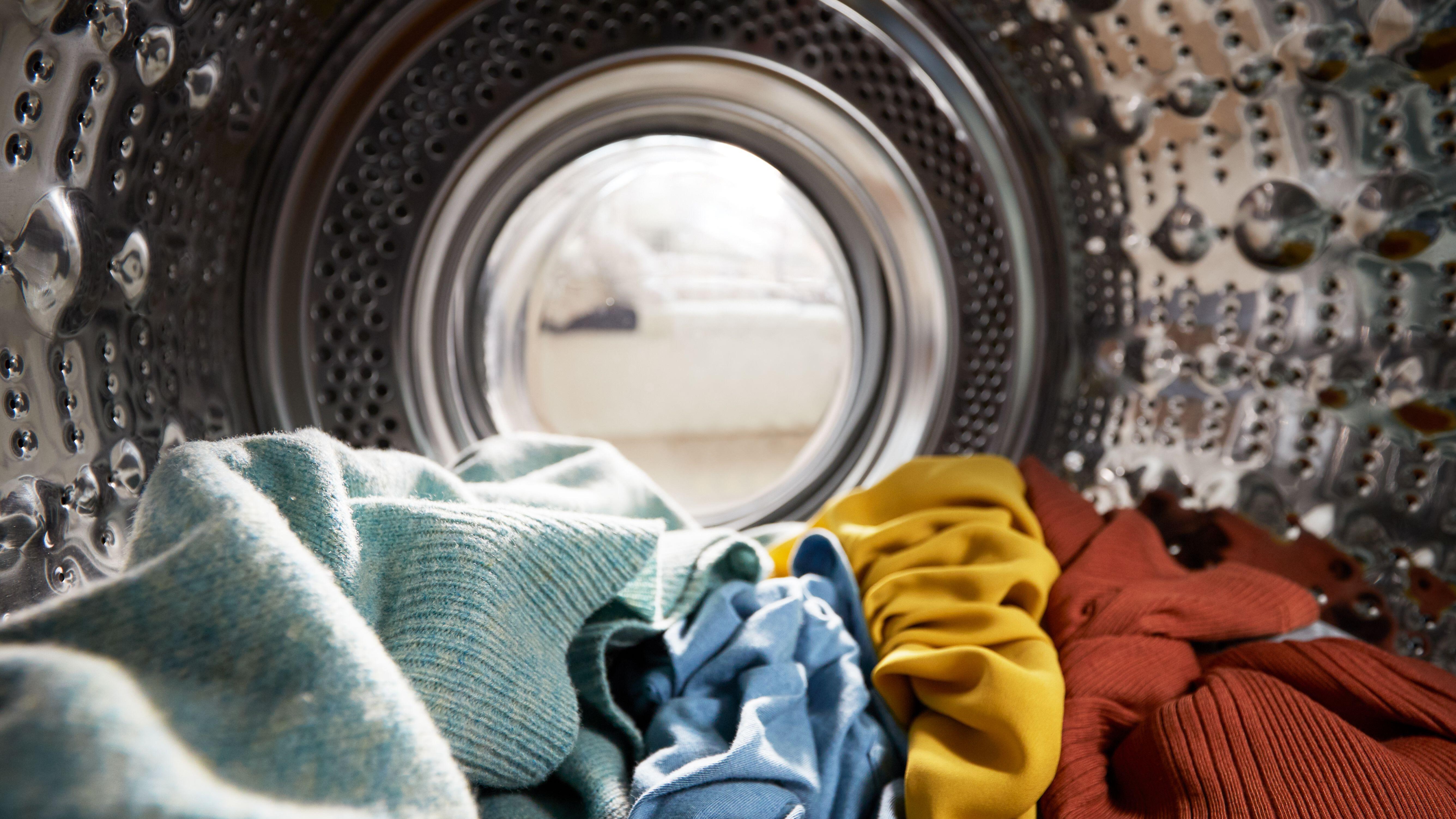There's no doubt about it, the best washing machines and the best dryers are such amazing modern-day appliances that we all too frequently take for granted. Just as in our youth, many of us also took for granted that someone else would worry about the laundry for us.
Inevitably, we grow up and discover that now we have to take responsibility for myriad necessary everyday tasks, that somehow seemed to just magically happen automatically when we were young. It's a rite of passage to learn how to use a washing machine.
Knowing how to wash clothes in a washing machine may seem pretty basic, but there are some instructions you should follow depending on what you’re cleaning.
For instance, when it comes to delicate fabrics, heavily soiled items, or dark colors, throwing everything together in the same load could risk damaging your clothes and ruining much-loved items.
We enlisted some experts in laundry and home technology to help us guide you step-by-step through how to use a washing machine, whether you have a front-load washer, or a top-load washing machine. Plus discover how to use a washer-dryer.

Gwil is a heated laundry and dishwasher expert with more than seven years experience and holds a particular interest in heat pump tumble dryers.

Judi Kutner is a licensed realtor as well as a senior contributor at Virtual Staging, the premier solution for transforming vacant property listings into captivating dream homes. She currently holds a Florida real estate license and has held a NY Mortgage Broker's license, a Florida Community Association Manager license, plus several SEC licenses during her career.

Joy Aumann is a licensed realtor (CIPS), interior designer and co-founder of the LUXURYSOCALREALTY team at COMPASS. 2021 and 2022 Wall Street Journal Real trends; ranked in the top 1,000 small real estate teams nationwide; two decades of luxury real estate and design experience staging homes; cited in major publications like The Wall Street Journal, Forbes, and Inc.
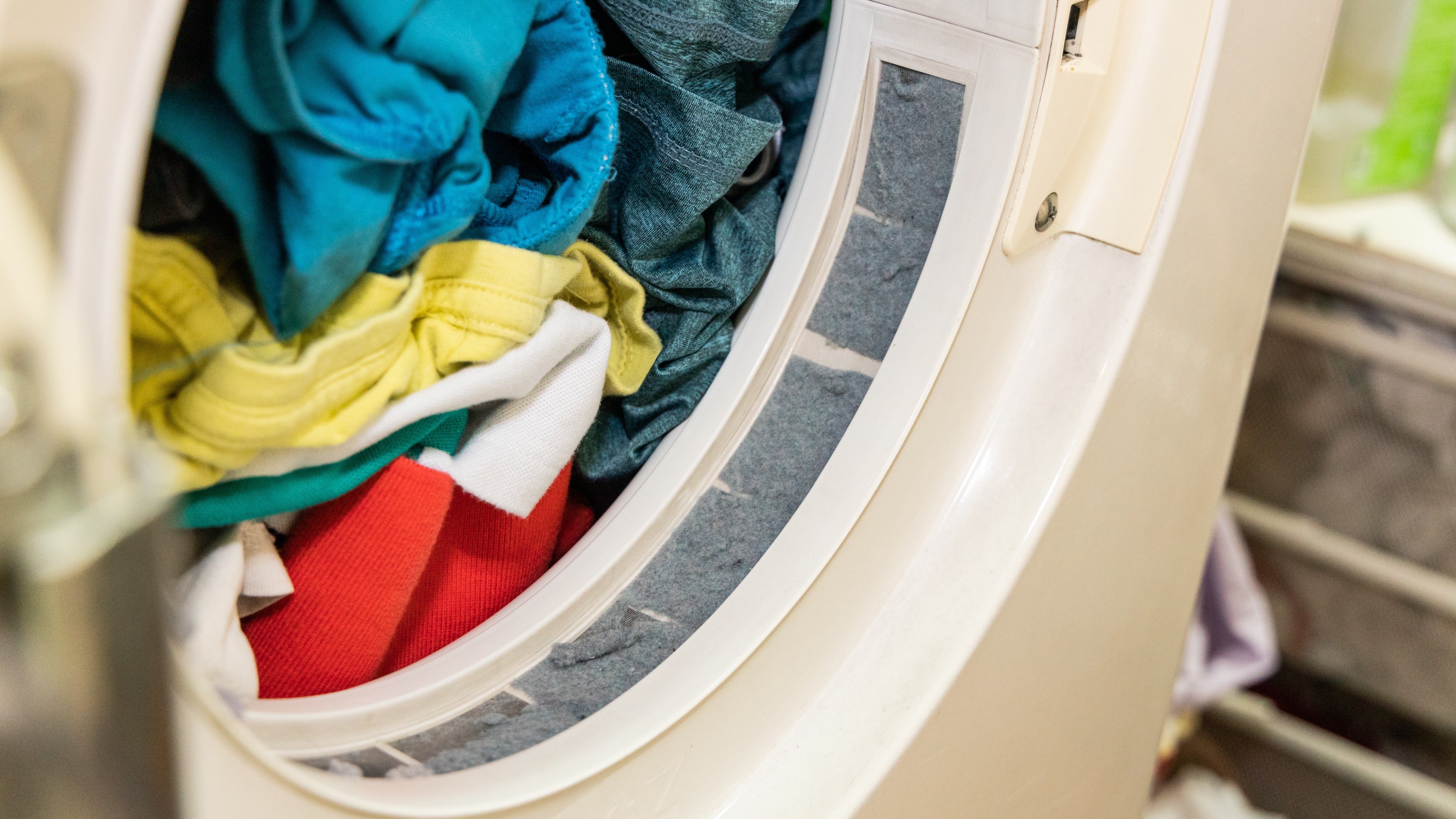
- Washing machine
- Laundry detergent
- Fabric softener (optional)
- Stain remover (optional)
- Mesh bags for delicate items
- Measuring cup (if needed)
Our experts advise that it's vitally important to know the correct way to load your washing machine, select the right detergent, and choose the best cycle and washing temperature.
It can save you money on your energy bills, ensure your laundry is hygienically clean, and keep your clothes looking and feeling new for longer.
The best washing machines can help with energy efficiency, but washing clothes properly according to fabric instructions helps remove dirt, bacteria, and sweat that can degrade fibers over time.
Our step-by-step guide will help you save time, money, and effort while extending the life of your wardrobe. It's an essential domestic skill that gives you convenience and control over your laundry habits.
Quick steps: How to wash clothes in a washing machine
- Sort your laundry
- Check pockets
- Pre-treat any stains
- Load the washing machine
- Add detergent and fabric softener
- Choose the water temperature and washing cycle
- Start the machine
- Remove and dry the clothes
Step by step guide: How to wash clothes in a washing machine
1. Sort your laundry
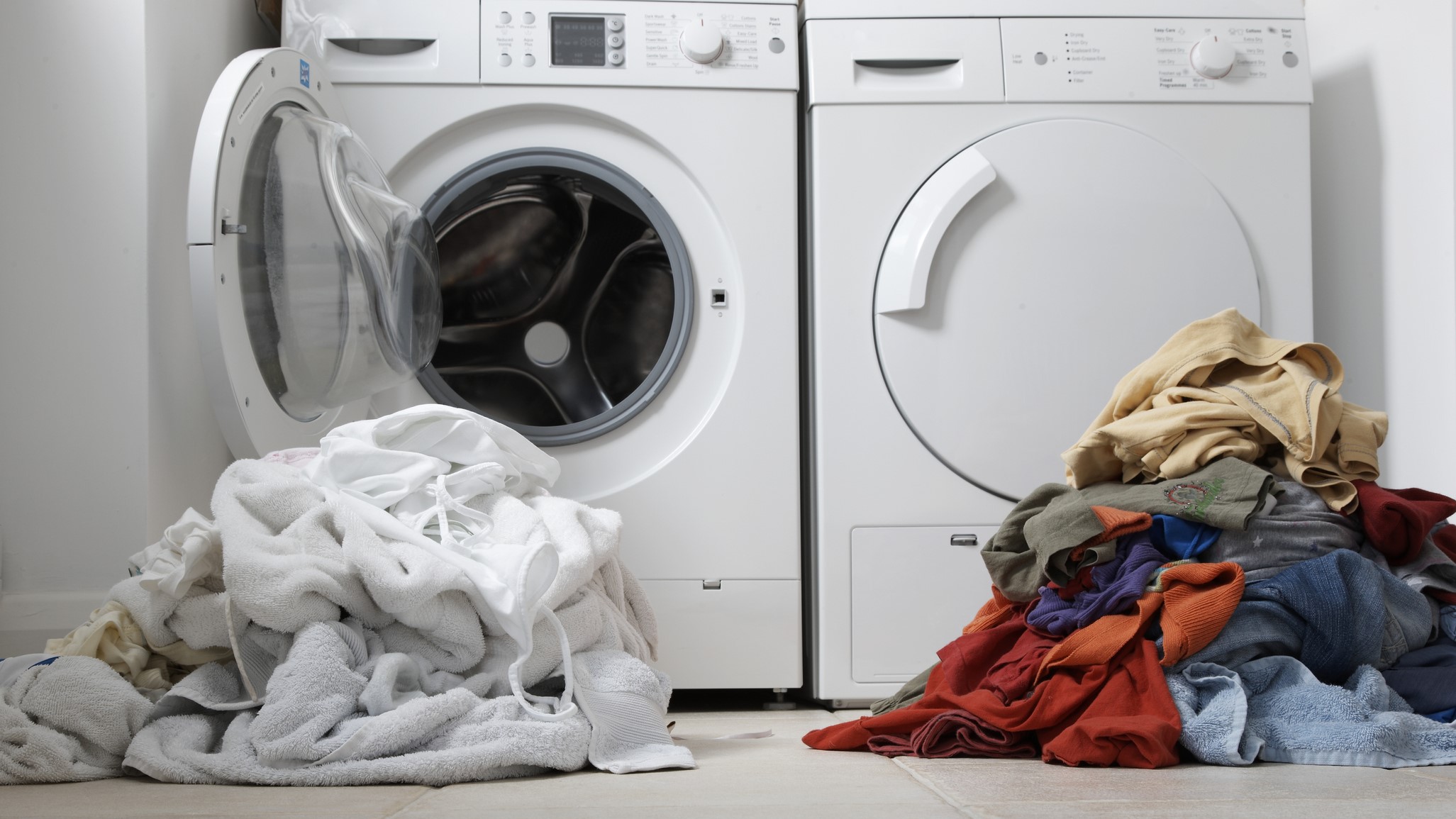
Keep your clothes and other household items, such as towels, looking great by sorting them into different piles for washing, according to color, fabric, weight, and more specifically depending on the following criteria:
Whites: Include white items like undershirts and socks.
Lights: Group light-colored items together.
Darks: Sort dark items like black, navy, brown, and red.
Delicates: Separate fragile items that need gentle washing, such as silks, lace, fine knits, and delicate underwear (pop these into mesh bags first to avoid tearing or damage).
Denim: Wash sturdy jeans and denim jackets separately from other clothes.
Towels/linens: Wash towels, sheets, and other linens together.
Heavy soils: Separate extremely dirty items like gardening clothes.
Colors that bleed: Group brightly colored items or brand-new clothes you’re not sure about.
Properly sorting laundry takes a bit more time upfront but helps your clothes last longer and look their best in the long run. Once you’ve sorted your laundry loads, you’re ready to wash!
Sarah Dempsey explains: "Different fabrics don’t just need to be washed at different temperatures, they require different temperatures and speeds for both washing and drying too."
"Many of us don’t understand the symbols on our clothing labels but you can use an app to scan them with your smartphone. Or if you have an iPhone, you can simply take a photo of the label, press the ‘i’ button and it will tell you exactly what the symbols mean."
2. Check pockets
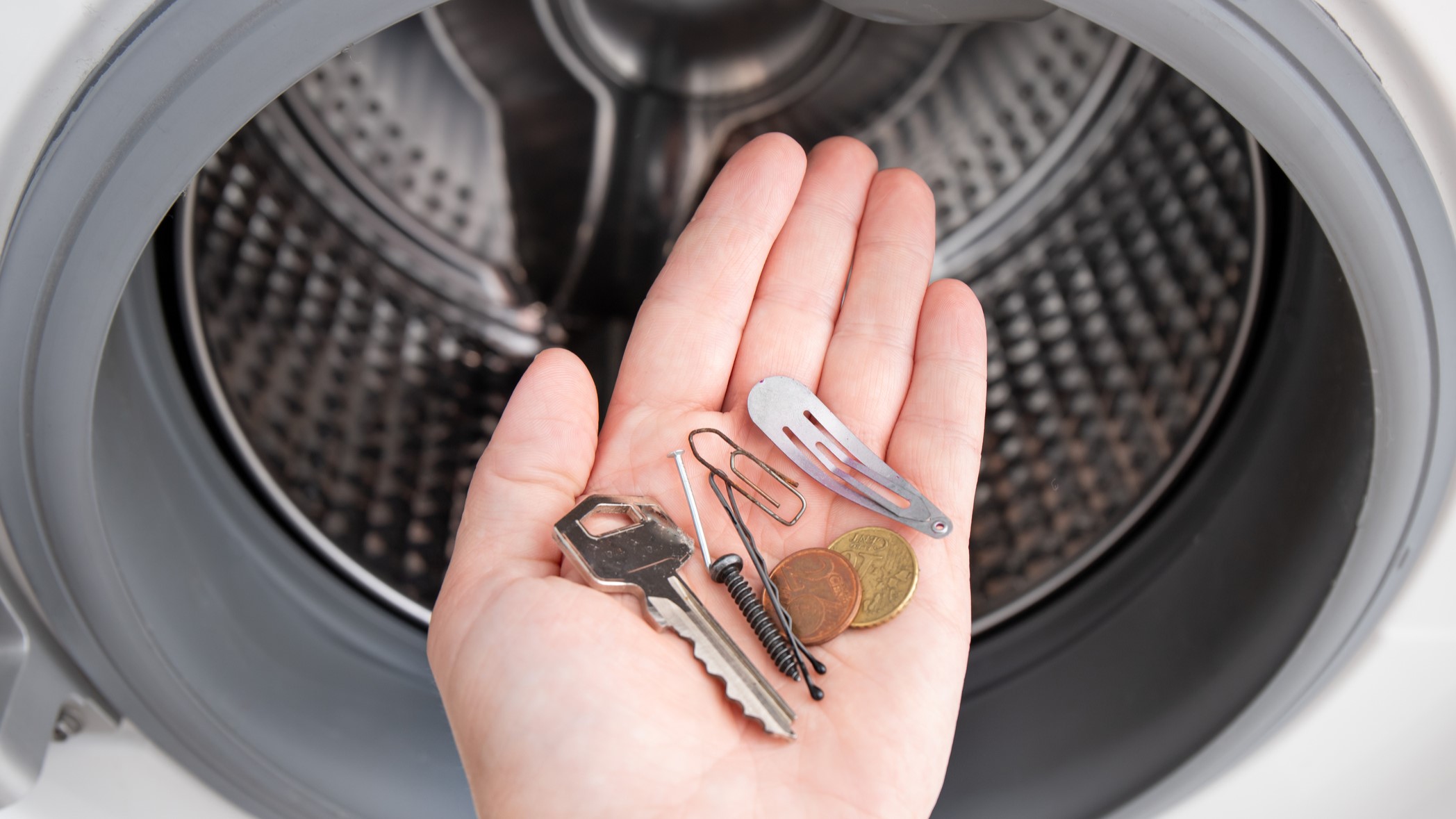
Before placing your clothes into the washing machine, check all pockets where small items may be hiding. You’d be surprised at what can end up in pockets - loose change, crumpled receipts, forgotten grocery lists, old tissues or pens, and more.
Coins, keys, and other hard objects can bang around violently during the washing cycles, creating fabric holes or rips. Tissues left in pockets will disintegrate into a mess of paper fibers that can clog drains and jam internal components. Pens will leak ink everywhere, ruining an entire load of laundry with indelible stains.
Washing clothes with items still in the pockets can damage your laundry and the washing machine itself, so this step is vital to ensuring a longer life for both.
3. Pre-treat any stains
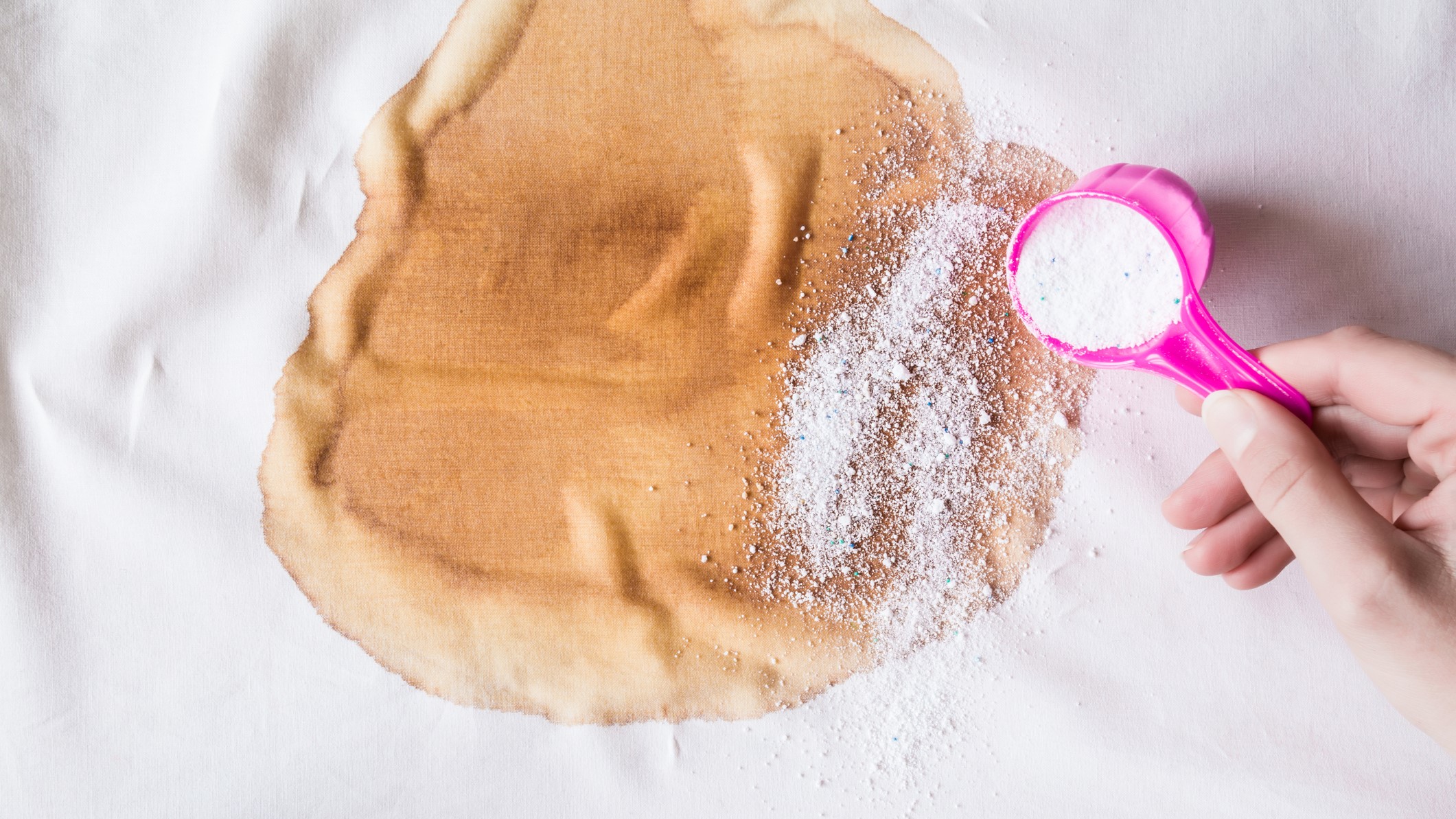
Check your clothes thoroughly for any stains, especially whites and lighter-colored fabrics.
If you have any stubborn stains, apply a stain remover or a bit of detergent directly to the stained area and rub it in gently. Let it sit for a few minutes before adding the stained item to the wash.
You can also purchase stain-removing treatments to add to your detergent. These can help to break down stubborn stains during the wash itself. There are also many natural ingredients that can help break down stains, such as baking soda, white vinegar, salt, and lemon juice. Make sure you choose the right ingredient for your stain, though!
4. Load the washing machine
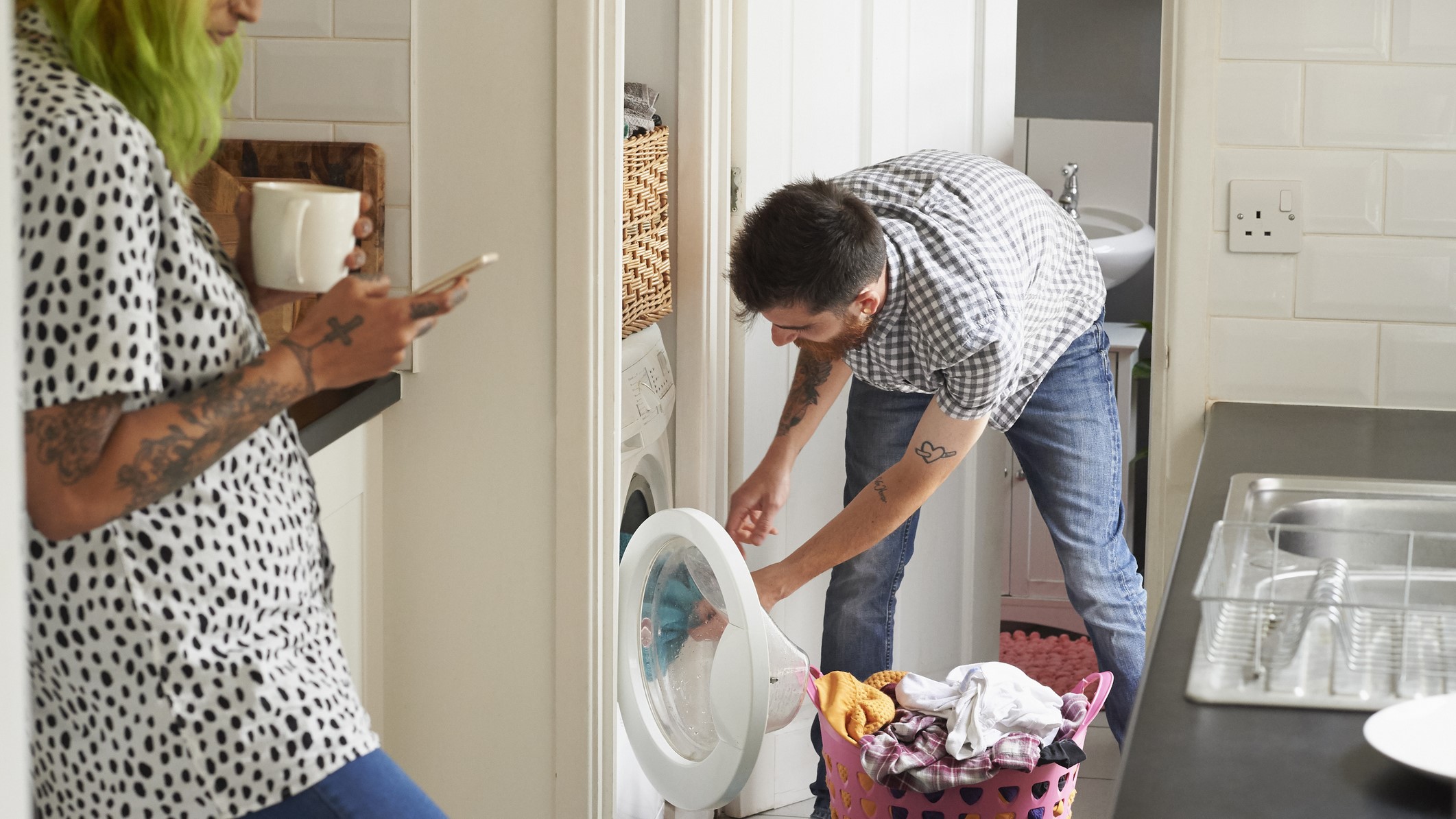
Open the washing machine door or lid and place your sorted clothes inside. Be careful not to overload the machine. Leave enough space so that your laundry can agitate and move around. An overloaded machine won't clean clothes properly, and an underloaded machine can waste energy and detergent.
Your washer will come with a weight guide on how much laundry it can take, but it’s not easy to weigh your laundry! As a good rule of thumb, try to leave three to four inches of space at the top of the drum.
According to our experts, overloading is the most common mistake people make. Avoid having to rerun wash cycles, or even your machine breaking down, by following some key advice.
Sarah Demspey asserts: "Overloading the machine can prevent clothes from washing properly. The drum shouldn’t be more than three-quarters full. Similarly, an unbalanced load can prevent your machine from being able to spin properly. Check your manual or use the machine’s sensors to help guide you on the right load size or weight."
5. Add detergent and fabric softener
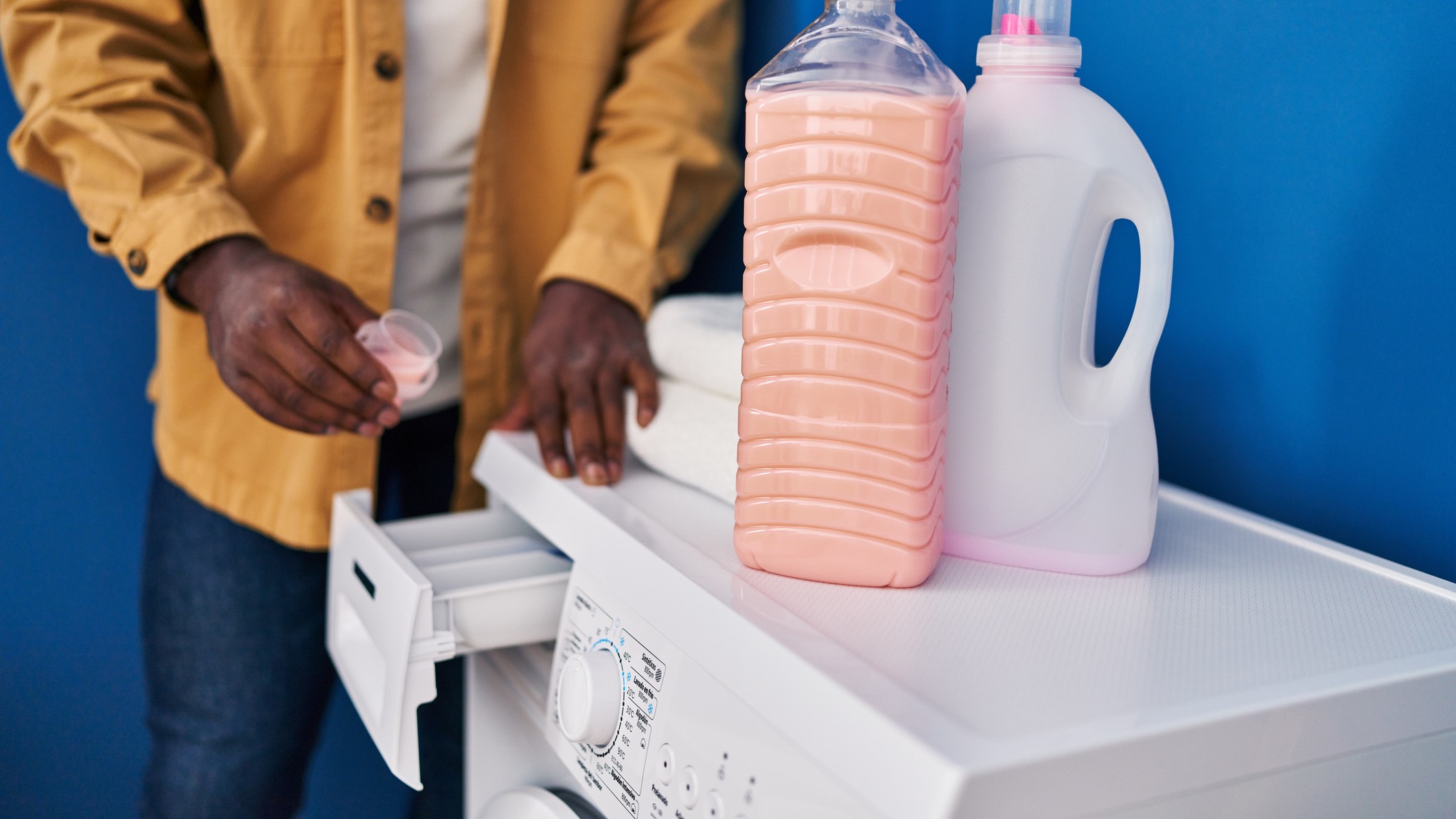
Measure the right amount of detergent based on your laundry load and the detergent's instructions. Most washing machines have a detergent drawer or compartment where you can pour the detergent. Or you can pop detergent pods or powder directly into the drum.
You may also want to add a fabric softener, especially if you’re washing towels or stiff denims.
Judi Kutner advises: "Detergent needs to be measured properly—too much creates build-up, which causes more issues than it solves."
Sarah Dempsey explains: "Using too much detergent in the wash can trigger your machine to use more water. This prevents excessive foaming but can leave your laundry wetter than usual. So, you may find you need to run the dryer for longer or add an extra spin."
Moreover, overfilling your machine with detergent can lead to other unpleasant and inconvenient mishaps; such as leaking machines, stained clothing, and even machines breaking down.
Trust us, we have been there, even if you're in a rush or it's tempting to add a little more detergent because you think it will lead to cleaner clothes, it is not worth the hassle it could potentially cause.
6. Choose the water temperature and washing cycle

This is where it gets tricky. Many washers offer specific cycles with pre-set temperatures, such as delicates, whites, heavily soiled items, or wools. If yours doesn't, here are some general tips:
Hot water (usually 130°F or 54°C): For whites and heavily soiled items.
Warm water (around 90°F or 32°C): For most colored clothes and lightly soiled items.
Cold water (around 70°F or 21°C): For delicate items, dark colors, and energy savings.
Next, select a wash cycle for your laundry. Most washers offer whites, normal, delicate, and heavy-duty cycles, while others may even give you the option of sportswear or towels. Follow the manufacturer's recommendations for the specific machine you're using.
Joy Aumann says: "Use the right cycles for your fabrics, like gentle for delicates or regular for everyday clothes, and go for a high spin speed to cut down on drying time."
"If your machine has auto-settings, let it do the work, but always double-check for delicate items. It’s all about matching your load to the machine’s capabilities."
Judi Kutner asserts: "Most machines have pre-set cycles for different fabrics, so pick one that matches what you’re washing. Jeans and towels need a different cycle than silk or other delicate fabrics."
AO laundry expert Gwil Snook adds: "Make sure to check those care labels and pick the right program for your fabrics to prevent any heat damage."
7. Start the machine
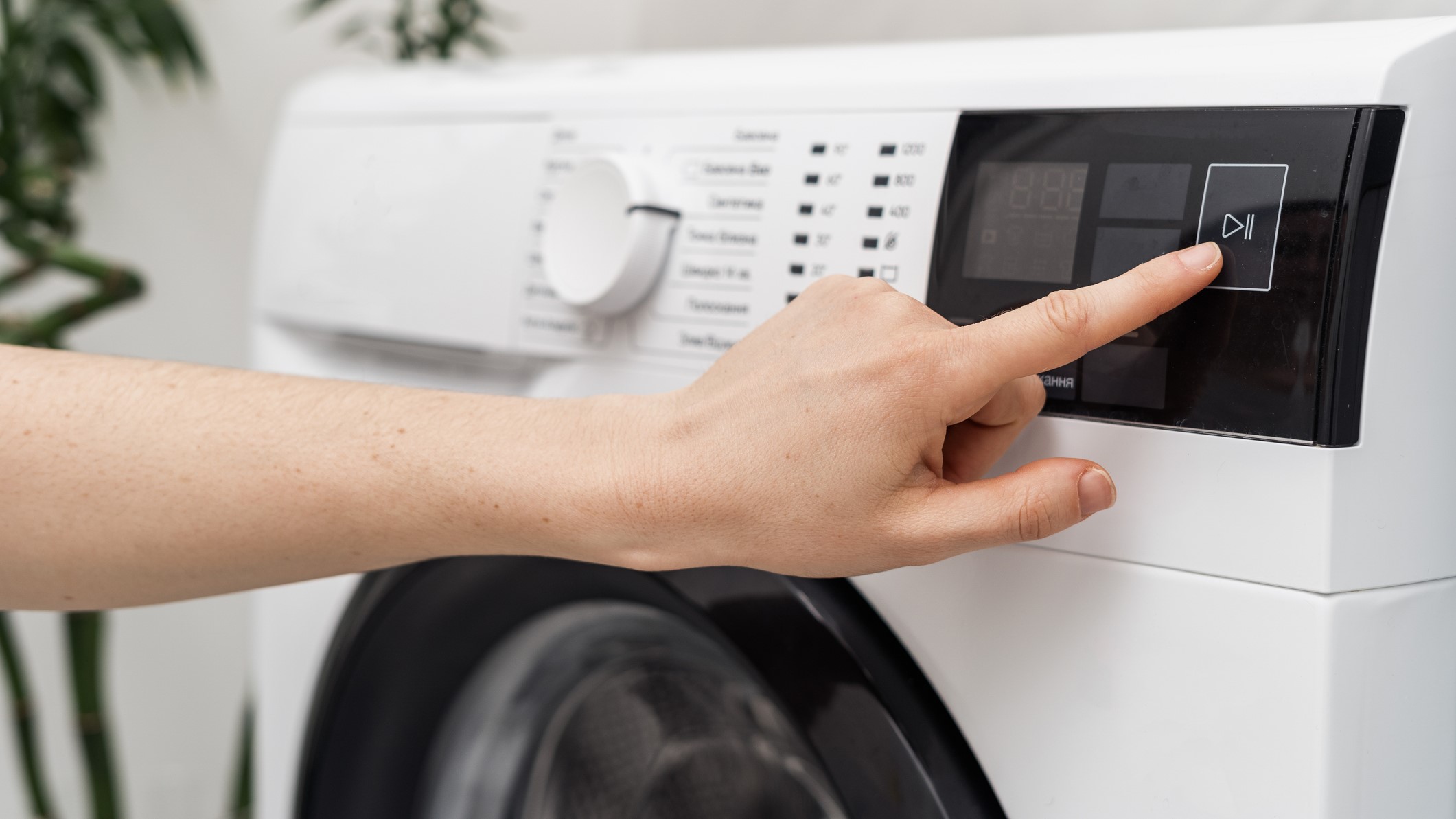
Close your washing machine’s lid or door and start the cycle. Some machines have additional options like pre-soak, extra rinse, or a delayed start, so again, follow your specific washer’s instructions.
8. Remove and dry the clothes

Wait until your washer’s cycle has finished and the door or lid has unlocked. Trying to force it open before it unlocks runs the risk of flooding your laundry room and can break your machine.
Remove your laundry and, depending on how you want to dry your items, pop them in your dryer or on a drying rack. Give them a good shake to smooth out any wrinkles or creases. Hang delicate items to air dry or use a low temperature in your dryer.
After your cycle has finished, it's advisable to get into the habit of performing quick and easy care and maintenance routines, such as the following, as our expert Sarah Dempsey suggests:
"After every use, make sure you leave the door and detergent drawer open to allow air to circulate and prevent the growth of mold. It’s also a good idea to check the drum and door seal are free from fluff."
"Wiping around the inside with a damp microfibre cloth is an effective way to remove lint and other trapped particles. Once a month, give your drum a bit of a sniff. If it has a stale smell, run a drum-cleaning cycle."
How to wash clothes in a washing machine: FAQs
How to remove stains from clothes in a washing machine
The sooner you treat a stain, the better your chances are of removing it completely. Here’s a quick guide to removing stains and stubborn marks from clothes:
- Don’t leave that stain to sit! This can make it more stubborn. As soon as you notice a stain, get to work on removing it.
- If you can identify the stain - that’s a good start. Different stains require different removal techniques and different temperatures. For example, oil-based stains need hot water to shift them, while blood stains should be sponged with cold water before washing.
- Pre-treat: Use the right treatment for your stain before washing. You can buy lots of stain-removing solutions for different types of stains or use a natural alternative. For example, baking soda is great for sweat stains, while salt can help to remove red wine stains. Whatever you use, let it sit on the stain for a few minutes before bundling your item into the washer.
- Always check the garment’s care instructions: Check the clothing care label before treating the stain to ensure that the stain removal method and the temperature you plan to use in the washing machine are safe for the fabric.
- Adjust washer temperature: Hot water is best for stubborn stains, oil, or grease marks; otherwise, warm water can manage most other stains. If your fabrics are delicate, don’t be tempted to go for hot - you could do more harm than good!
- Use a heavily soiled cycle: If your washer has a pre-soak or heavy-duty cycle to tackle stubborn stains, use it.
- Check the stain after washing: If the stain persists, repeat the removal process, wash it again, then dry the garment outside in direct sunlight, as this can help to fade certain stains. Don’t pop stained garments in the dryer, as this can set the stain.
How do washing machines work?
Washing machines use a combination of water, detergent, agitation, spinning, and rinsing to lift dirt and refresh your laundry. Although the basic mechanics are pretty simple, they’re very effective. Here’s a simple overview of how washing machines work:
- Water enters the washing machine through inlet valves, mixes with the detergent, and fills the inner drum of the washer to the correct level for the washing cycle you’ve chosen.
- Your clothes are moved around inside the washing machine - this is called agitation. The washer uses an agitator or an impeller to move them around inside the drum. This movement, the water, and the detergent all help to loosen dirt and break down stains.
- Once the washing cycle is finished, the drum spins to push out water, detergent, and residue. The washer then pumps out the dirty water through the drain hose.
- The drum fills up again with fresh, clean water, while the drum itself spins and tumbles clothes to remove traces of detegent.
- A final high-speed spin extracts any excess moisture from clothes so they are ready for the dryer.
How to clean a washing machine
It’s common for washing machines to develop unpleasant odors and musty smells after prolonged use. When the inner drum is not properly cleaned and maintained, residues of dirt, bacteria, mold, mildew, and soap scum can build up over time.
If you begin to notice even a faint foul or damp smell coming from your washer, it means the time has come for a thorough cleaning of the drum.
Start by running an empty sanitizing cycle using either bleach or a commercial washing machine cleaner to kill bacteria and break up residue. Then, follow our guide to cleaning the drum of a washing machine thoroughly.
Don’t forget to remove the detergent drawer and rinse it out with hot, soapy water to remove any build-up of detergent or fabric softener. You may need an old toothbrush to get into any tight spots.
You can also run an empty cycle with a washing machine cleaner every month or use your machine’s self-cleaning cycle if it has one.
Our experts advise following a regular routine of care and maintenance, from clearing out filters, pipes, and drains, to cleaning the interior drum, drawers, compartments, and exterior of your washing machine.
AO laundry expert Gwil Snook explains:
"Regularly cleaning your washer dryer will make sure that it keeps performing at its best. There’s a few quick and easy steps that you can follow to make sure it’s kept in tip top condition."
"Clean the detergent drawer and filter to remove detergent residue and lint. Run a maintenance wash with an empty drum using a washing machine cleaner or a mix of white vinegar and baking soda. Top tip: Don’t forget to wipe the drum, door seal, and exterior with a damp cloth."
Be sure to check out our guide for how to clean a washer-dryer.
Final thoughts
Sorting laundry by color, fabric, and soil level before washing is a key step to keeping your clothes looking great for longer. Pre-treating stains, checking pockets, loading the machine correctly, and using the right detergent amount and wash cycle are also vital.
Regular washing machine cleaning prevents odor and residue buildup. You can do this monthly or whenever you notice damp or unpleasant odors coming from your washing machine.
Following these proper techniques will help keep your clothes clean, undamaged, and in great condition for years to come.
